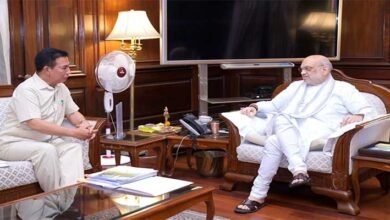Mizoram becomes third power-surplus state in the North East India

Aizawl
The first unit of a 60 MW power plant in Mizoram began generating electricity this week– making it the third power-surplus state in northeastern India after Sikkim and Tripura.
As per North Eastern Electric Power Corporation (NEEPCO) sources “The first unit (30 MW) of the 60 MW capacity Tuirial hydro-power plant started generation on trial basis from August 29.
“The second unit of the project would start generation from either October-end or the first week of November.”
With a population of just 1.1 million, Mizoram’s current demand of electricity is only 110 MW to 115 MW during peak hours and is being met by the state’s few mini power projects and availability of its share of power from regional and central sector projects.
“After the full commissioning of the Tuirial hydro-power project, Mizoram would be a power-surplus state,” an official of Mizoram’s power department said, adding that the additional power is likely to be supplied to the regional or national grid.
After the project was conceptualised in 1994, the Cabinet Committee on Economic Affairs cleared it on July 7, 1998,” .
However, soon after project work started, farmers and locals launched a series of agitations against the submerging of their standing crops and farmland under the reservoir.
The project work came to a total halt on June 9, 2004, due to the agitation launched by the “abruptly-formed Tuirial Crop Compensation Claimant Association, claiming compensation for the standing crops in the riverine reserve forest.
In 2011 after the Union Power Ministry, NEEPCO and the Mizoram government jointly negotiated with the agitators.
However, the delays and consequent price escalation pushed up the cost of the project, initially pegged at Rs 369 crore, to Rs 1,100 crore.
Sikkim is self-sufficient at 95.70 MW while Tripura, whose daily need is 285 MW, is self-reliant in electricity.
Since March last year, Tripura has been supplying 160 MW of power to Bangladesh and is ready to provide an additional 40 MW if the central government permits it to do so.









